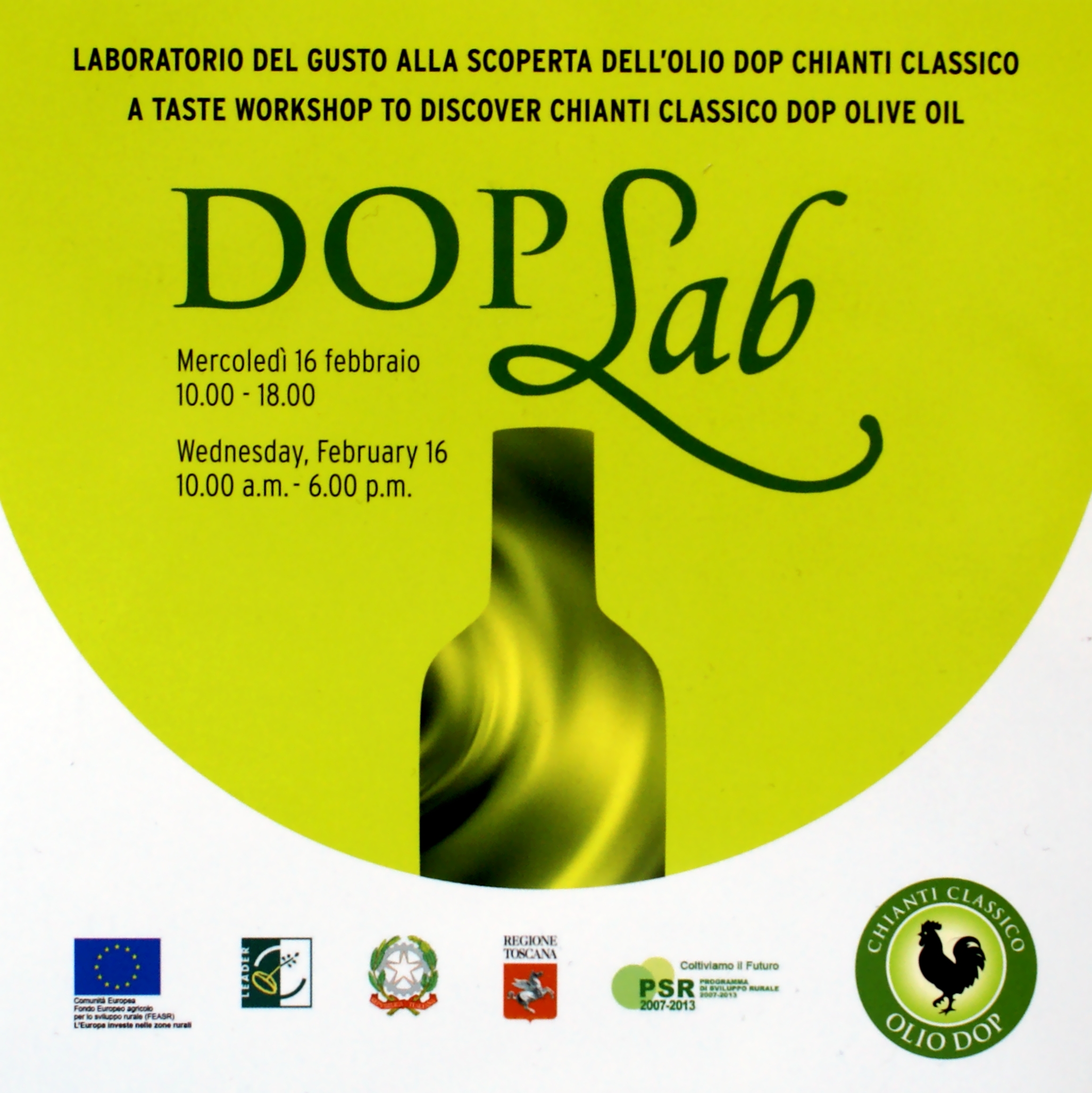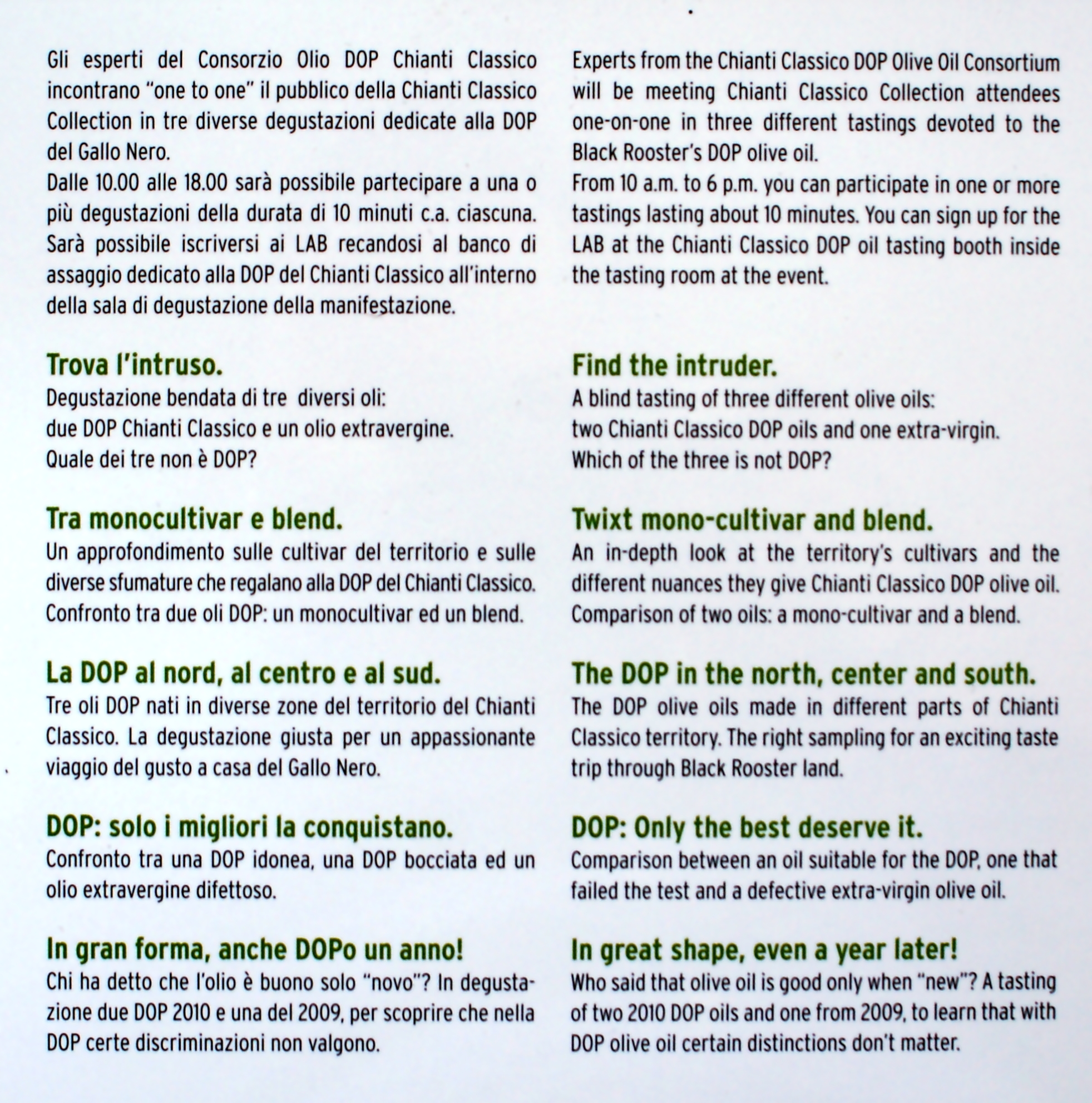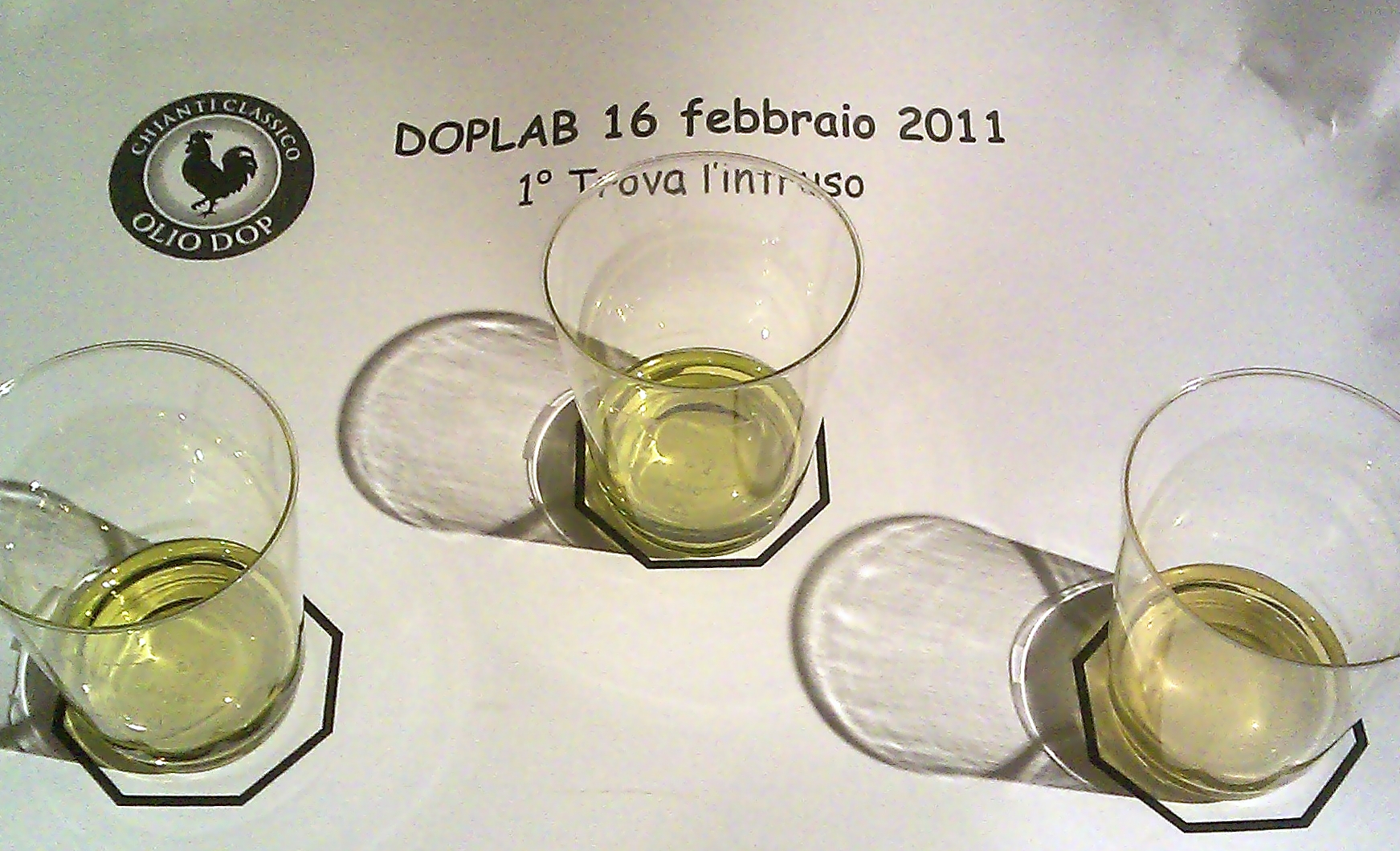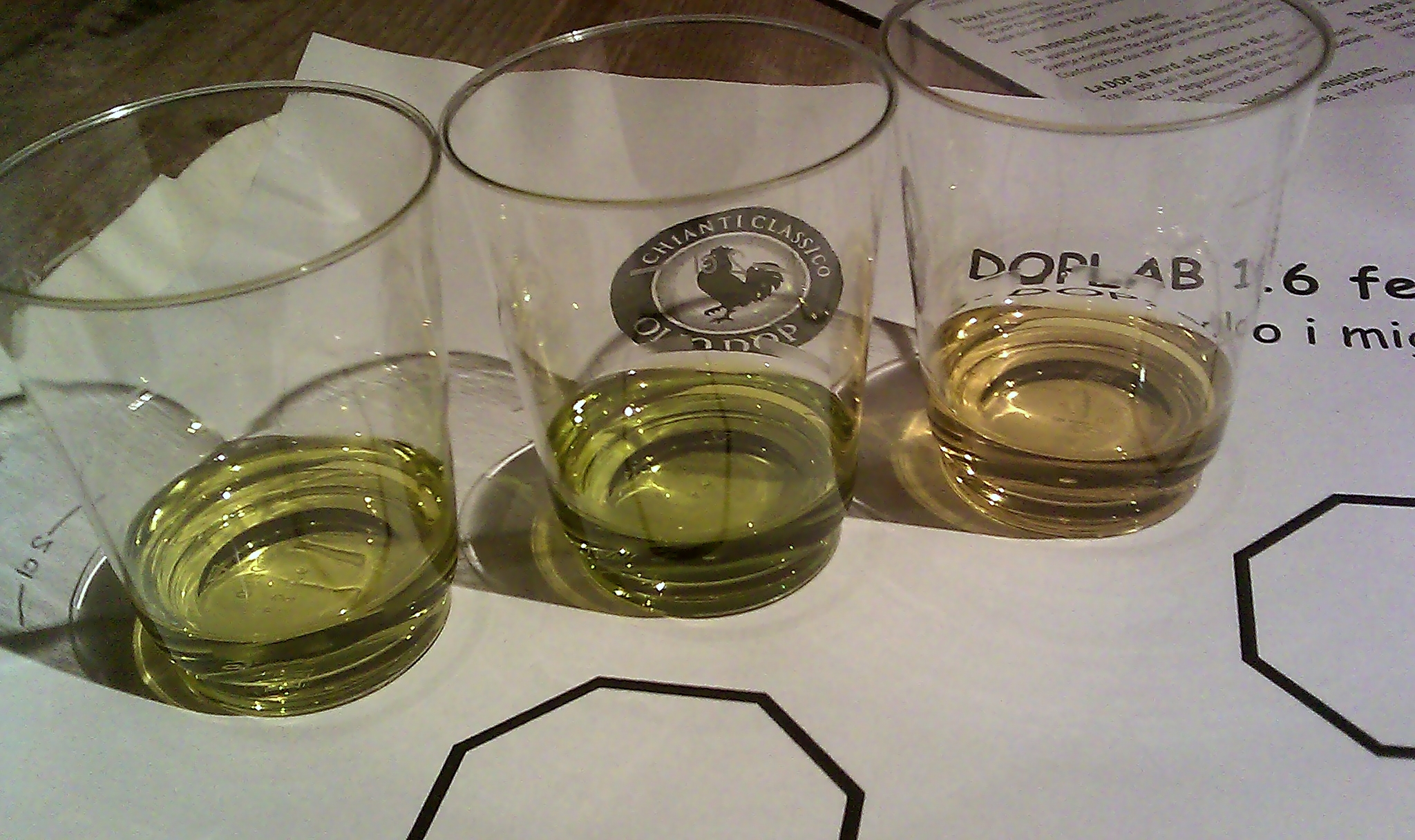Extra virgin upper crust
Posted on 1 March 2011
Here’s another bit of my Tuscan experience last week. There wasn’t only wine to excite mind and soul. Parallel to the Chianti Classico tasting in Florence, the local consortium held a brilliant series of educational tastings of olive oil.
I’m a big fan of olive oil. I consume a lot of it, and I’m quite sensitive to oil quality and where it comes from. But I can’t say I’m an expert: I’m unfamiliar the technicalities of oil production, and I find oil tasting challenging – I can’t taste more than a half-dozen or so; after that, bitterness builds up and effectively freezes your palate. Also, it’s not always easy to discern the subtle qualities of various oils in a comparative tasting. Here was a good occasion to train in that direction.
I took the complete tour: five themed blind tastings according to the programme you can see on the photo above. It was really interesting. The flights were well-planned too; even a relative novice such as yours truly could easily solve the various riddles. For example, sorting out a (high-priced) supermarket extra virgin oil from two certified DOP Chianti Classico appellation oils was fairly obvious: it was quite OK but had a tiny bit of oxidation and a chemical aroma. In contrast, the two DOPs were bursting with clean vegetal freshness and had a much longer aftertaste. The side-by-side comparison of 2010 and 2009 oils was also eye-opening: the latter had lost a bit of aromatic vibrancy but was not at all declining, with good depth of taste and attractive sweetness. That flight surely made a statement about DOP oils being able to age in bottle for a year, something I didn’t take for granted formerly.
Based on this tasting and my former experience, I can say that the DOP classification for an Italian olive oil is a serious qualitative recognition. Unlike for wine – where nearly every sample submitted will get the DOC seal – the tastings for oil appear to be pretty stringent. I’ve never had a DOP oil that was mediocre. And one of the flights on this blind tasting featured an oil that passed the DOP exam, one that was deemed faulty, and another that was denied the DOP: although technically correct, it lacked the characteristics of freshness and vibrancy requested from an DOP Chianti oil. Here’s a photo of those oils:
The colours aren’t rendered very well but I think you can see from the yellowish oxidative hue that #3 is the faulty oil; and the warmer hue of #1 in contrast to the very deep emerald green of #2 shows that #1 is less fresh, sweeter and flatter. (Although theoretically colour shouldn’t influence the assessment of olive oil, and technical tastings are often performed in opaque glasses). I’m impressed by the seriousness with which DOP is awarded to Italian olive oils; as a consumer it makes me very confident that when I buy a DOP oil, I’ll only get the crème de la crème.
But DOP is not a prerequisite for oil quality. Just like in the world of wine, there are some off-zone oils that are spectacularly good, or ones whose producers don’t seek the endorsement of DOP. I always stock up on extra virgins when I’m in Tuscay in the winter, and this year I followed the advice of Tullio Scrivani, owner of the Osticcio wine bar in Montalcino which might well me Tuscany’s best. (For a few years now, Osticcio has hosted an ‘alternative’ tasting of young Brunellos from producers who don’t attend the official one; it’s a great occasion even if you’re a casual wine lover). He recommended the 2010 Extra Virgin from the Sestadisopra estate. It’s classified ‘only’ as an IGP Toscana (equivalent to a regional wine), but it’s mightily fine. It shows all the good characteristics of Tuscan oil – deep emerald colour, plenty of vibrant vegetal freshness – although in line with its southern provenance, it’s less piquant than the oils from the Florentine part of Chianti. Most importantly it has fabulous intensity on the palate – the flavour is mouthfilling and goes on forever. At this level of quality, extra virgin olive oil is one of this world’s most wonderful products.
Disclosure
I took the educational tasting free of charge courtesy of the Consorzio del Chianti Classico; the Sestadisopra oil was my own purchase.






